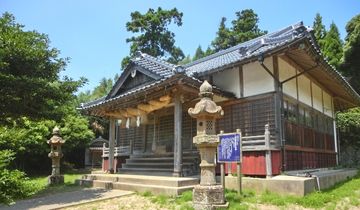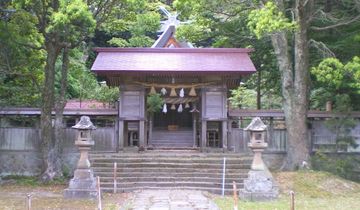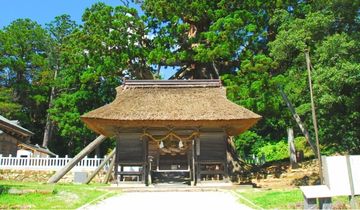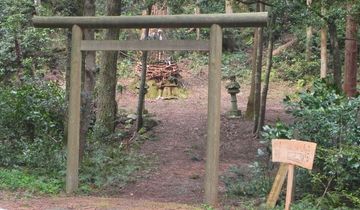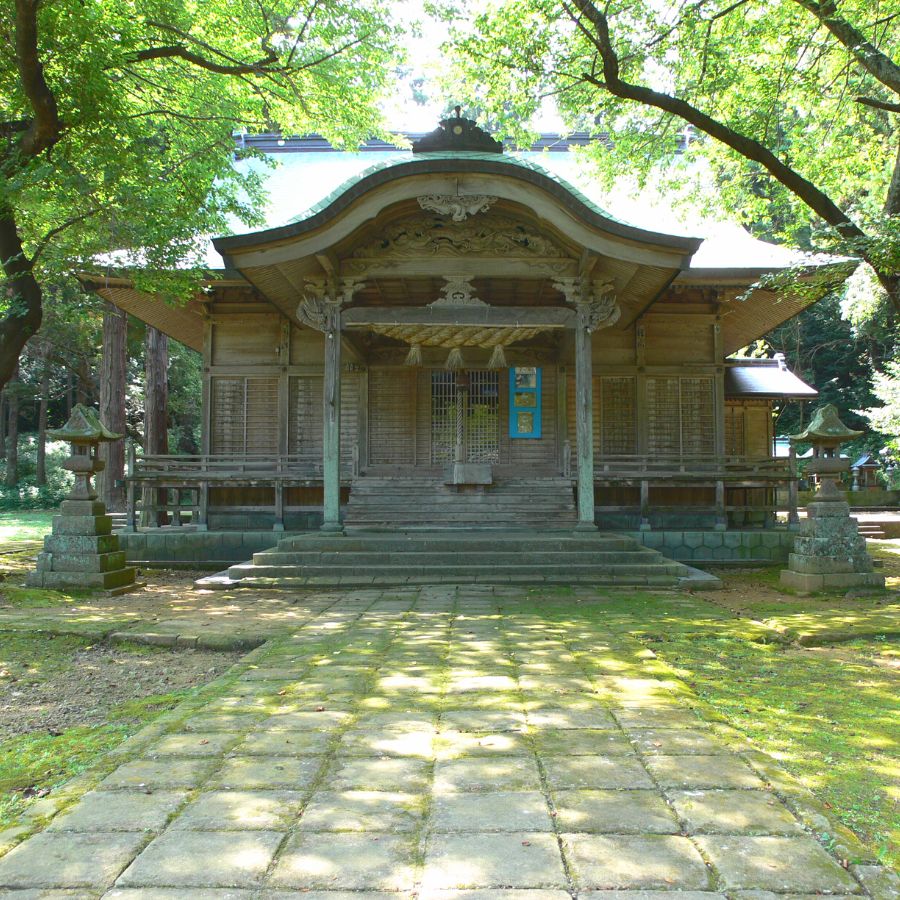
Lifestyles and Traditions - Shrines
Yurahime Shrine is a very old shrine, which was documented as "Oki-koku Chibu Kōri Yurahime-no-mikoto no kami, received as a national shrine" in an article recorded in Shoku Nihon Koki, dated the 14th day of the ninth month of year 842, during the reign of Emperor Ninmyō. In the Engishiki written in the Heian period (794–1185), it was listed as a Myōjin Taisha, and together with Mizuwakasu Shrine on Dōgo Island, they are the Ichinomiya (highest ranking) shrines of the former Oki Province. From ancient times, people would come to pray when an envoy was to be sent to a foreign country or when there were foreign evils (enemies).
According to Saito Toyonobu, a feudal retainer of the Matsue Domain who toured the area under a feudal decree in 1667, the shrine was "very small and old and has been forgotten by the people," and by the early modern period, it seemed to have already declined. In the Meiji era (1868–1912), a new shrine building was constructed according to the record of the shrine, and brought to its current size. The main hall is of an altered form of the kasuga-zukuri architectural style, and it has a pent roof with a karahafu gable, which is known as masugata-myojin-zukuri style. The worship hall, hall of offerings, and main hall are connected beautifully, and the statues of a pair of shrine guards are placed inside the zuijinmon gate.
Nowadays, the enshrined deity is said to be Yurahime-no-mikoto, as taken from the name of the shrine. According to the Engishiki, which was completed in 927, the enshrined deity was formerly Watasu-no-kami, and it is also believed that Watazumi is enshrined here.
In front of the shrine, where a torii gate stands, is a shallow inlet; it is famous as a place where huge shoals of squid were washed up, giving the inlet its name "Ika-yose-no-hama." According to legend, the deity Yurahime came to Yura (the name of the area) in a gigantic bucket from the faraway sea. The deity used her bare hands to paddle, and when she was traveling, the squid played with her hands; it is said they pulled and bit her hand. In order to apologize for their rudeness, every autumn, shoals of squid flock to the inlet in front of the shrine. The locals were happy to see this miraculous wonder performed by the deity, and they built huts by the shore, where all family members would come and scoop up the squid in the inlet.
According to another legend, during the reign of Emperor Jinmu (the legendary first emperor of Japan), the deity, riding a huge bucket and with a squid in hand, appeared on a paving stone near the torii gate. Another legend states that the deity is Suseribime-no-mikoto, and when she washed her hands with sea water on her way to Uragō in a gigantic bucket, she was angered by the squids who touched and played with her hands. Every year on October 29, on the day of the festival of Yurahime Shrine, there is a ritual called kamigaeri, and it is called kamigaeri when squids swim into the inlet. This deity is commonly known as Surume-daimyōjin because of this relationship between squid and the shrine (surume is a type of squid in Japanese).


